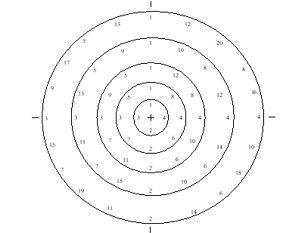How to Tighten Flange Bolts and Nuts Scientifically and Properly?
I. Technical Requirements for Tightening Flange Bolts and Nuts During Equipment and Pipeline Flange Installation
1. Inspection of Flange Fasteners
Gaskets:
During installation, ensure the gasket is new, clean, and dry. Inspect the gasket for any defects or damage. Old gaskets must not be reused. Before installation, confirm that the gasket size and grade match the markings on the flange.
Flanges:
Before installation, inspect the flange surface for damage, such as scratches, nicks, dirt, corrosion, and burrs. If radial scratches or dents across the flange sealing surface exceed 0.2 mm in depth and cover more than half the width of the gasket sealing surface, the flange must be replaced or the sealing surface must be re-machined. The nut support surface on the back of the flange should be parallel and smooth. Check the alignment of the flange according to the pipeline installation requirements in Section 6.2 of SH3501-2011.
Bolts and Nuts:
Verify that the correct bolts and nuts are used based on equipment and pipeline design requirements. The threads and contact surfaces must be free of dirt, rust, scale, nicks, burrs, debris, and other external substances that could affect torque during tightening. Welding or machining methods must not be used to repair bolts. After tightening, at least two threads should protrude from the nut. Bolts and nuts must be lubricated before use to reduce the friction coefficient during tightening and to enhance resistance to thread stripping and corrosion. The threads of the studs and nuts, as well as the contact surfaces, must be degreased and dried before applying lubricant. Apply a uniform lubricant to the bolt threads, nut threads, nut bearing surfaces, washers, and the nut support surfaces on the flange. Use high-temperature anti-seize compounds as needed.
2. Bolt Tightening Methods
Non-Torque Impact Wrench or Hammer Wrench:
It’s suitable for general equipment and pipeline flange tightening, selected based on bolt size and flange pressure rating. Tightening requirements are as follows.
1) The maintenance unit should develop a tightening plan, assigning a tightening sequence number to the flange for symmetrical tightening.
2) Use four bolts at positions 1, 2, 3, and 4 to position the gasket so as to ensure the center of the spiral wound gasket is within the flange edge.
3) Hand-tighten the positioning bolts, then insert the remaining stud bolts and hand-tighten them to balance the load to ensure at least two threads protrude from each end of the nut.
4) Based on the field equipment and flange, calculate the number of tightening passes (at least three) and the hammer load (force) for each pass. The hammer load should increase progressively (e.g., 50%, 80%, 100%) to avoid excessive loading that could cause gasket sealing failure.
5) The tightening sequence for a non-torque impact wrench or hammer wrench: Tighten two radially opposite bolts to the specified hammer load. Then tighten another pair of bolts approximately 90 degrees apart from the previous pair and continue until all bolts are tightened to the specified hammer load.
6) Finally, tighten all bolts to 100% hammer load in a clockwise or counterclockwise direction.


Torque Wrench:
It’s suitable for high-temperature, high-pressure, flammable or explosive equipment and pipeline flanges. Tightening requirements are as follows.
1) The maintenance unit should develop a tightening plan, determine the appropriate torque, and verify the design based on bolt strength, initial and working sealing pressure of the gasket, and medium pressure to prevent bolt breakage and gasket sealing failure due to excessive compression.
2) Assign a tightening sequence number to the flange for symmetrical tightening.
3) Use four bolts at positions 1, 2, 3, and 4 to position the gasket, ensuring the center of the spiral wound gasket is within the flange edge.
4) Hand-tighten the positioning bolts, then insert the remaining stud bolts and hand-tighten them to balance the load, ensuring at least two threads protrude from each end of the nut.
5) Based on the field equipment and flange, calculate the number of tightening passes (at least three) and the torque for each pass. The torque should increase progressively (e.g., 50%, 80%, 100%) to avoid excessive loading that could cause gasket sealing failure.
6) The tightening sequence for a torque wrench: Tighten two radially opposite bolts to the specified torque; then tighten another pair of bolts approximately 90 degrees apart from the previous pair; continue until all bolts are tightened to the specified torque.
7) Finally, tighten all bolts to 100% torque in a clockwise or counterclockwise direction.
8) Record the torque values for future reference during maintenance.
Bolt Tensioners:
It is suitable for high-temperature, high-pressure, and flammable or explosive equipment and pipeline flanges. Tightening requirements are as follows.
1) The maintenance unit should develop a tightening plan, determine the appropriate tension force, and verify the design based on bolt strength, initial and working sealing pressure of the gasket, and medium pressure to prevent bolt breakage and gasket sealing failure due to excessive compression.
2) When using a bolt tensioner for step-by-step tightening, follow the principle of uniform bolt tightening and refer to the torque wrench tightening sequence.
3) During the bolt tensioner tightening process, determine the number of tightening passes and increase the pressure progressively (e.g., 50%, 80%, 100%). Apply pressure uniformly, stabilizing at each level before increasing to avoid excessive impact tension that could affect bolt preload.
4) Record the pressure values for future reference during maintenance.
II. Hot Tightening Requirements for Equipment and Pipelines During Startup
(1) Hot or cold tightening is not required for operating temperatures between -29°C and 250°C.
(2) Hot or cold tightening should be performed after the equipment and pipeline temperatures have stabilized. Use explosion-proof tools, and avoid temperature or pressure increases during tightening.
(3) During tightening, start from the point with the largest flange gap and proceed symmetrically. If leakage occurs, address it first.
(4) During the startup process, inspect the tightening quality using a torque wrench at 100% torque or an explosion-proof hammer tool to check for loosening by hammering in the tightening direction.

